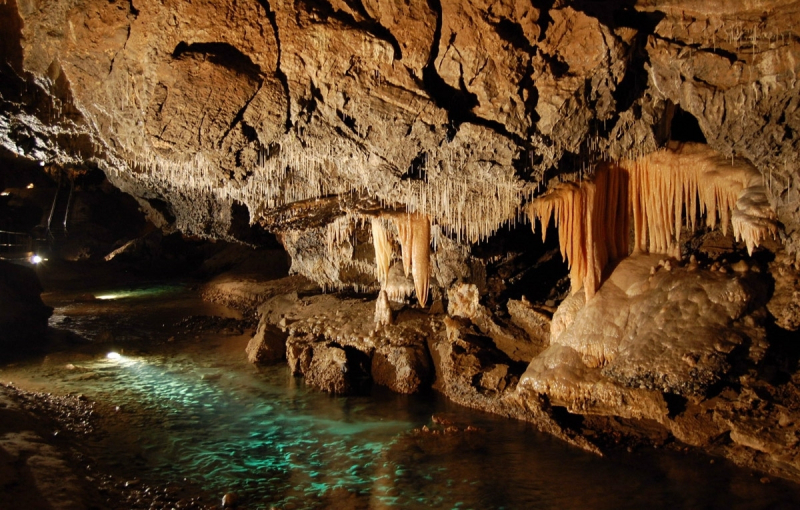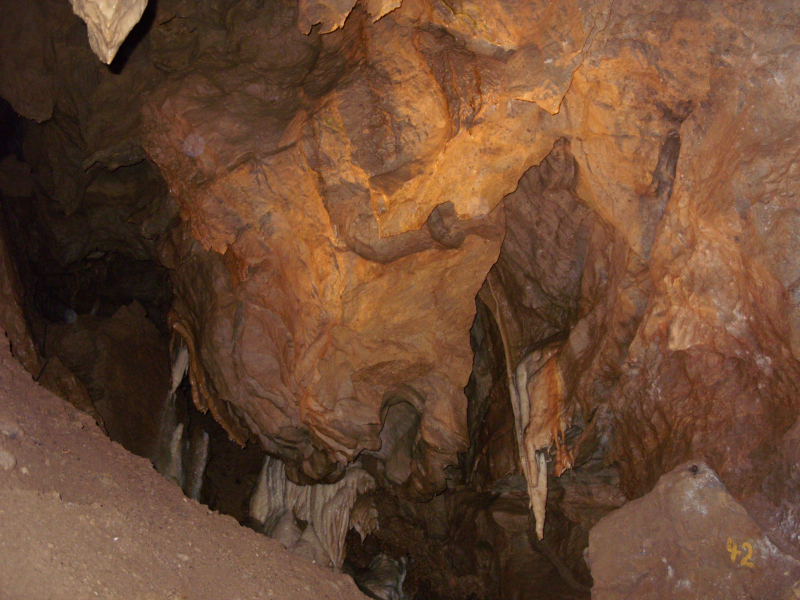Bystrianska Cave
Bystrianska Cave is a limestone cave in Slovakia, located on the southern slopes of the Nizke Tatry Mountains, along the route to Banska Bystrica, on the southern outskirts of the town of Bystrá, in the Brezno District, Banskobystrick area. This is one of the most beautiful caves in Slovakia. The cave's older sections have been known since prehistoric times. E. and A. Hollmann, as well as J. Kovalčík, discovered additional parts through the precipice Peklo in 1926. The Mostárenské Hall was unearthed in 1951. In 1932, the cave's lower entrance was opened. J. Majko and J. Vytsalová, along with their colleagues, connected the Old and New Caves in 1955. In 1968, the cave was opened to the public for around 490 meters (1,610 feet). Speleotherapy has been practiced in the Lower Guerilla Hall and other portions of the cave since 1971.
The cave is predominantly made up of middle trias dark limestone rocks that were generated in tectonic fissures by water corrosion, the demolition of some parts of the ceiling, and the steady enlargement of the cave by the underground river Bystra. The cave's lower section still has an underground stream that emerges in the settlement of Valaska. The cave is embellished with stalactites and stalagmites, the most notable of which are Zvonivé stalaktity, Beldachn, and Kovacska vyhna (Blacksmith's workshop). The cave has a ceiling river-bed in which the spherical granit stones of the Low Tatras are linked by sinter, apart from several erosive features. The cave is 2,637 meters long (8,652 feet) and 95 meters deep (312 feet). The cave is the most significant in the Upper Hron River Valley.
A memorial tablet in the largest dome honors the partisan who was shot and killed by fascist soldiers in the cave. Aside from the sightseeing trip, there is a medical hall that is now being utilized to treat children's respiratory ailments (speleotherapy).
Length: 2,637 metres
Address: Bystrianska jaskyňa, 977 01 Brezno, Slovakia












